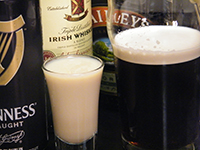 The vast majority of the FNDC have a lot of Irish blood in them. It’s likely that many of our ancestors came across the Atlantic during the 1800s, but the result is that we all have Jameson in our liquor cabinets today. In recognition of our (mostly) common Irish roots, the Friday Night Drunk Club is going to hook you up with our own Irish Car Bomb recipe, and we can even talk about how the Irish Car Bomb was originally created.
The vast majority of the FNDC have a lot of Irish blood in them. It’s likely that many of our ancestors came across the Atlantic during the 1800s, but the result is that we all have Jameson in our liquor cabinets today. In recognition of our (mostly) common Irish roots, the Friday Night Drunk Club is going to hook you up with our own Irish Car Bomb recipe, and we can even talk about how the Irish Car Bomb was originally created.
According to pub lore, the Irish Car Bomb was created in 1979 by bartender Charles Oat of Norwich, Connecticut. The original drink was called a Grandfather, and was composed of half a shot of Baileys and a quarter shot of Kahlúa. Further experimentation by Mr. Oat led to adding a little Jameson to the shot, and the drink was rechristened an IRA. Two years later, the Irish Car Bomb came to life, as Oat dropped his shot of Irish cream and Jameson into his half-finished Guinness, which up until that time, had only been used for a chaser.
Irish Car Bomb
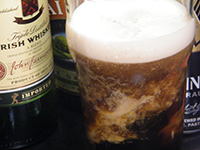
- 8 oz Guinness Stout
- 1 oz Jameson Irish whiskey
- ½ oz Baileys Irish Cream
Pour the Guinness into a tall pint glass and let it settle. In the meantime, layer the Jameson and Baileys in the shot glass, setting the Baileys on the bottom. The Irish Cream and Jameson can also be served 1 oz to 1 oz in your drop shot, depending on how much Irish whiskey you want. Drop the shot into the Guinness stout and chug it down quickly. If the Baileys combines with the Guinness for any time at all, the mixture becomes increasingly curdled as time progresses.
Setting this drink up should only take one minute or so. God, I love bomb shot drinks. Irish Car Bombs have become the main drink for St. Patrick’s Day, right up there with green beer. It’s three ingredients are all patently Irish: Guinness, Baileys, and Jameson make up the trifecta. Guinness stout fans such as myself choose to drink Irish carbombs all year round.
Cool Facts About Guinness Stout
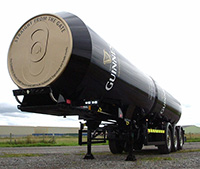 The perfect pour of Guinness Draught from the tap takes 119.5 seconds, sometimes described as a “double pour”. Guinness in the can should be poured into a pub glass in one fluid motions, while bottled Guinness should be consumed directly from its container. Watching Guinness being poured from the tap is always fascinating, as the bubbles seem to travel downward instead of upwards, as normal beers do. This lateral bubbling is caused by the higher nitrogen content in Guinness; most drafts only contain carbon dioxide. This nitrogen content, as well as filtration, is what the widget inside cans of Guinness is for.
The perfect pour of Guinness Draught from the tap takes 119.5 seconds, sometimes described as a “double pour”. Guinness in the can should be poured into a pub glass in one fluid motions, while bottled Guinness should be consumed directly from its container. Watching Guinness being poured from the tap is always fascinating, as the bubbles seem to travel downward instead of upwards, as normal beers do. This lateral bubbling is caused by the higher nitrogen content in Guinness; most drafts only contain carbon dioxide. This nitrogen content, as well as filtration, is what the widget inside cans of Guinness is for.
Arthur Guinness had confidence that his product would be around for a long time; in 1759 he signed a 9000 year lease on his brewery. Stout originally referred to the strength of the brew, as Guinness was originally referred to as extra stout porter. Porter was named for the hotel workers in Dublin, who would drink it at the local pubs during their lunch breaks.
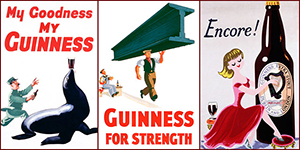 Guinness is considered more nutritious than other types of beer. Scientific studies have shown it to possess antioxidant compounds, and Guinness is lower in calories than orange juice or milk. Over 40% of Guinness worldwide sales come from Africa. The Guinness harp was chosen as a symbol for the company in 1862 to represent its Irish heritage. The Guinness harp faces the opposite direction than the harp displayed on the Irish coat of arms.
Guinness is considered more nutritious than other types of beer. Scientific studies have shown it to possess antioxidant compounds, and Guinness is lower in calories than orange juice or milk. Over 40% of Guinness worldwide sales come from Africa. The Guinness harp was chosen as a symbol for the company in 1862 to represent its Irish heritage. The Guinness harp faces the opposite direction than the harp displayed on the Irish coat of arms.



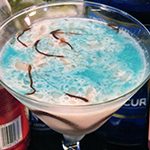
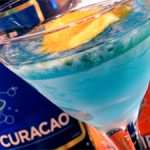
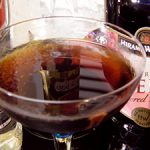
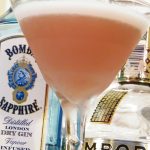
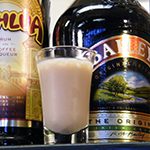
[…] Vodka Red Bull differentiates itself from other drinks such as the Jägerbomb, Skittle Bomb, or Irish Car Bomb, which are drank “depth charge” style. While all of these drinks are usually slammed by […]
[…] Red Bull differentiates itself from other drinks such as the Jägerbomb, Skittle Bomb, or Irish Car Bomb, which are drank “depth charge” style. While all of these drinks are usually slammed […]